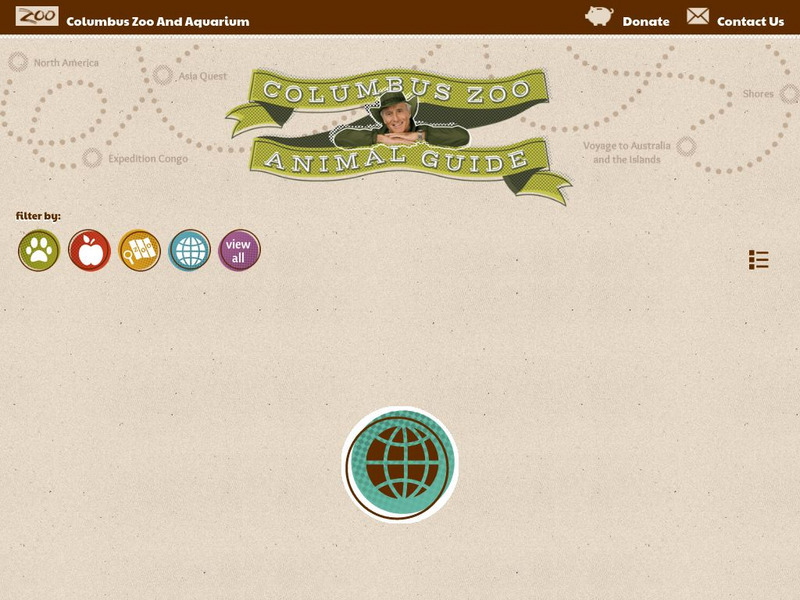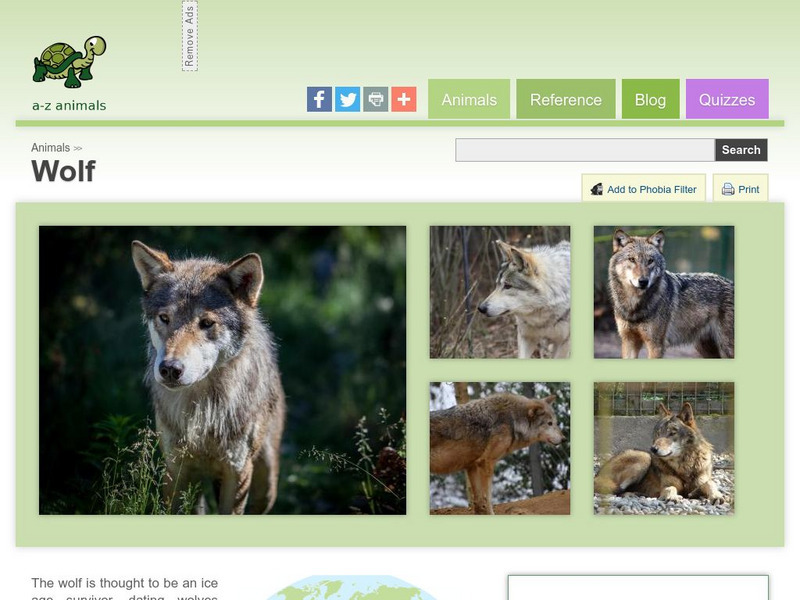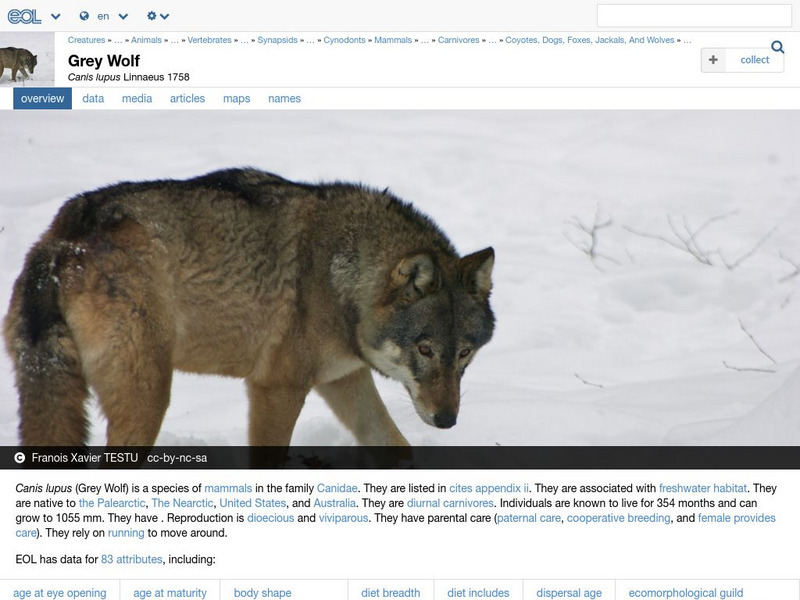Canadian Wildlife Federation
Hinterland Who's Who: Wolf
Learn about the habitats and habits of wolves, along with their feeding and breeding characteristics.
PBS
Pbs Kids: Plum Landing: The Gray: Mountain Mission
After watching the "The Gray" episode of PBS Kids' Plum Landing, students will draw a picture of gray wolves that are traveling in a pack.
Other
Bioinsight: Wolf Scats a Precious Tool for Biologists
Just from wolf scat, it's possible for biologists to know if a species occurs in the area, what the animals are eating, if they are healthy, if reproduction is occurring, if the scat is from a male or a female and even the minimum number...
Kidport
Kidport: Who Eats What?
At this site students are encouraged to try and answer questions that relate to what animals eat. At the bottom of the web page are beautiful pictures of land and sea animals and when selected, students will be able to read short facts...
Library of Congress
Loc: Poetry 180: The Last Wolf
In this non-prose piece, the scene of a wolf, which is the last surviving member in the midst of a sprawling area, is described.
Smithsonian Institution
Smithsonian National Zoo: Zoogoer Magazine: Capital Coyotes
This article by Howard Youth in Zoogoer first appeared in the July/August 2005 edition of the magazine. The article covers a range of topics related to coyotes including "March of the Prairie Wolf," "Keeping Coyotes Wild," "At a Den Site...
Smithsonian Institution
Smithsonian National Zoo: Zoogoer Magazine: Mexican Wolves, Wild Once Again
Cheryl A. Sweet's article on the conservation of Mexican wolves centers on the near extinction and ongoing survival of the wolves. The article goes through a variety of sections including The Lost Lobo, An Uncertain Beginning,...
Smithsonian Institution
Smithsonian National Zoo: Zoogoer Magazine: Wolves Change an Ecosystem
Jim Robbins's article, "Weaving A New Web: Wolves Change An Ecosystem" focuses on the research and findings of biologist Robert Crabtree and his organization, Yellowstone Ecosystem Studies, in looking at wolves and coyotes.
Other
Columbus Zoo and Aquarium: Mammals
This interactive animal guide from the Columbus Zoo highlights general information and fun facts about mammals; this information can be sorted by diet or region where they live. Select an animal from the extensive list to begin exploring.
A-Z Animals
A Z Animals: Animal Facts: Wolf (Canis Rufus)
This entry identifies the defining characteristics of the canis rufus, otherwise known as the wolf.
Other
Lausd: Julie of the Wolves Literature Guide
This site features a guide to Jean Craighead George's book "Julie and the Wolves." This project is designed specifically for advanced English Language learners to learn about the Eskimos and Native American population.
Other
Wolf Park Indiana: General Information About Wolves
Site provides the answers and explanations to questions such as, "What do wolves look like?" "Where do wolves live?" and "What do wolves eat?" An excellent resource for information about wolves.
Other
Compare & Contrast Informational Texts: Common Core Literacy: 3.ri.9
This downloadable resource developed by Jamie Jacobs and edited by Karen Almond will engage students in comparing and contrasting two sets of paired informational passages. Students will compare and contrast articles about coyotes and...
Enchanted Learning
Enchanted Learning: Taiga Animal Printouts
Colorful pictures of animals found in the taiga biome such as the arctic fox, bald eagle, gray wolf, and muskrat. Information is provided about each animal when clicked.
University of Georgia
University of Georgia: Integrated Pest Management Basics
Gives general info on Integrated Pest Management. Along with news, IPM contacts, publications, and related links. Also lists various subject areas to look into.
Globio
Glossopedia: Wolves
Wolves are closely related to coyotes, jackals, foxes, and the dogs you see romping in your neighborhood park. Wolves are predators who live and hunt in packs. They are well known for their eerie howling and their intelligence. This...
PBS
Pbs: Nature: Bald Eagle
Learn about America's national symbol, the bald eagle, through this full-length documentary.
Royal Canadian Geographical Society
Canadian Geographic: Animal Facts: Wolf
Offers quick facts on the wolf about physical appearance, habitat, behavior and its range.
Defenders of Wildlife
Defenders of Wildlife: Fact Sheets
Here you can find fact sheets on over 50 species of animals. Find an animal by where it lives in the world, and learn all about it.
Encyclopedia of Life
Encyclopedia of Life: Ethiopian Wolf
The Encyclopedia of Life presents this in-depth overview of Ethiopian Wolves (Canis simensis), including their habitats, size, conservation status, and much more. Images of this species and maps of its global distribution can also be...
Encyclopedia of Life
Encyclopedia of Life: Maned Wolf
The Encyclopedia of Life presents this in-depth overview of Maned Wolves (Chrysocyon brachyurus), including their habitats, size, conservation status, and much more. Images of this species and maps of its global distribution can also be...
Encyclopedia of Life
Encyclopedia of Life: Wolf
The Encyclopedia of Life presents this in-depth overview of Wolves (Canis lupus), including their habitats, size, conservation status, and much more. Images of this species and maps of its global distribution can also be found here.
Canadian Museum of Nature
Canadian Museum of Nature: Arctic Wolf
The Arctic wolf is native to the Canadian Arctic. Information and pictures are found on this animal facts page.
CNN
Cnn: Wolves Get Help to Make a Comeback in the West
CNN news story about the efforts to reintroduce wolves into the wilds of America.
















